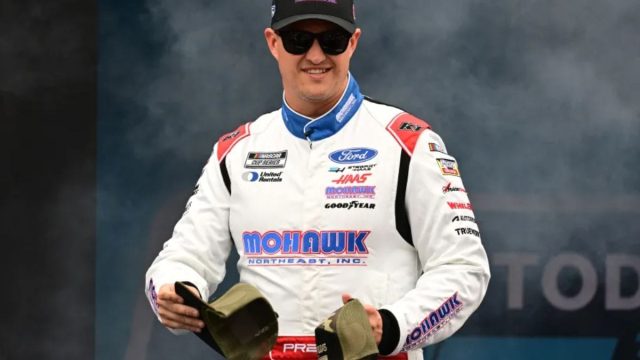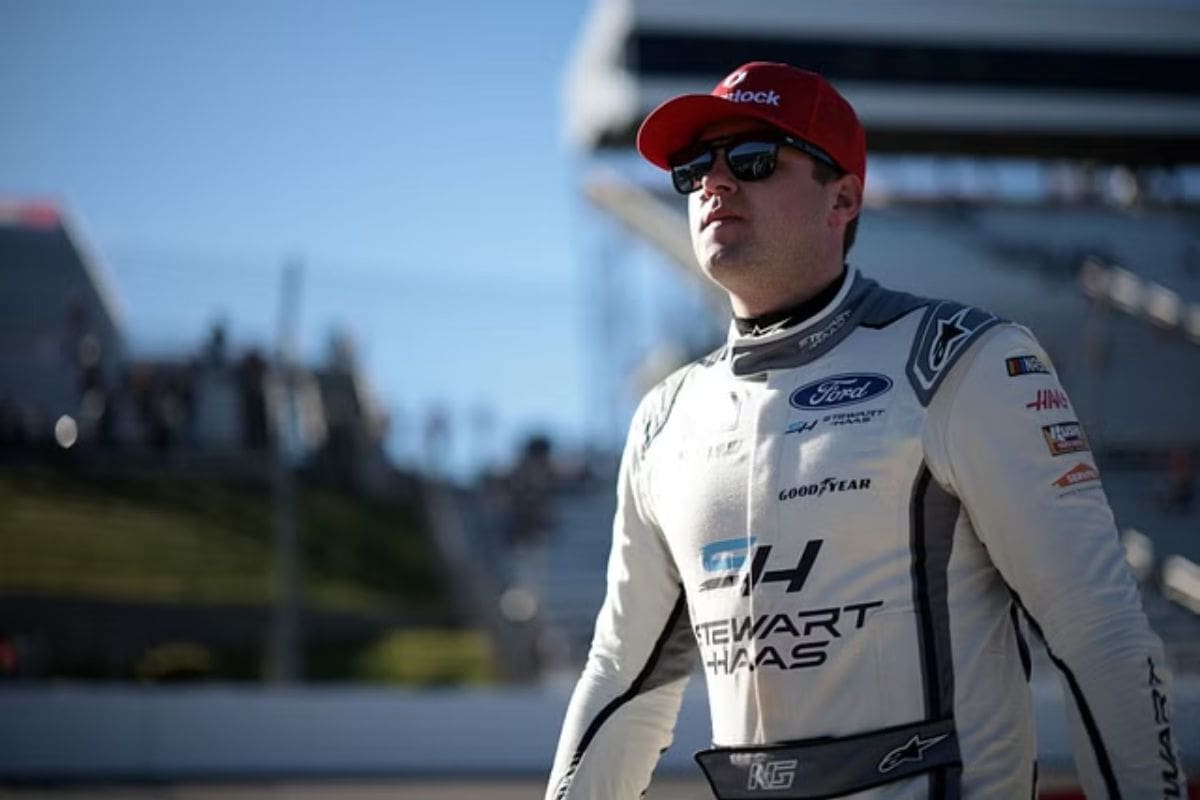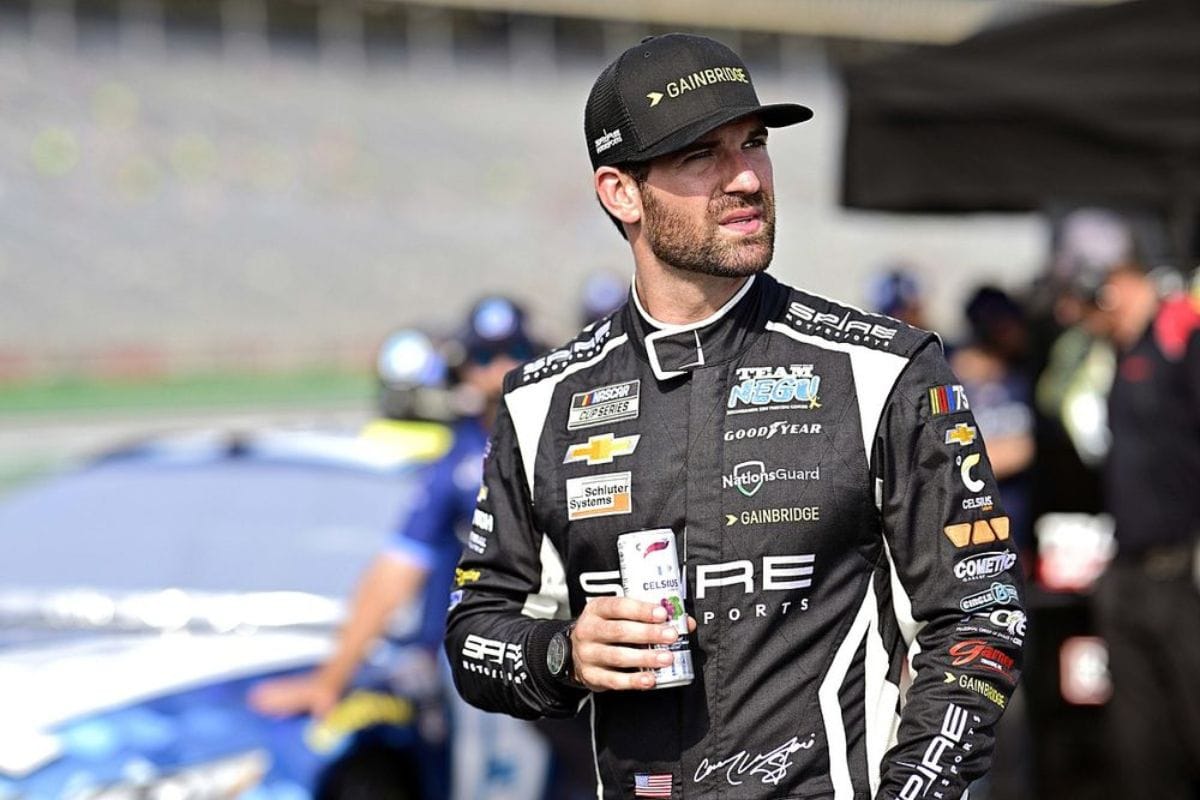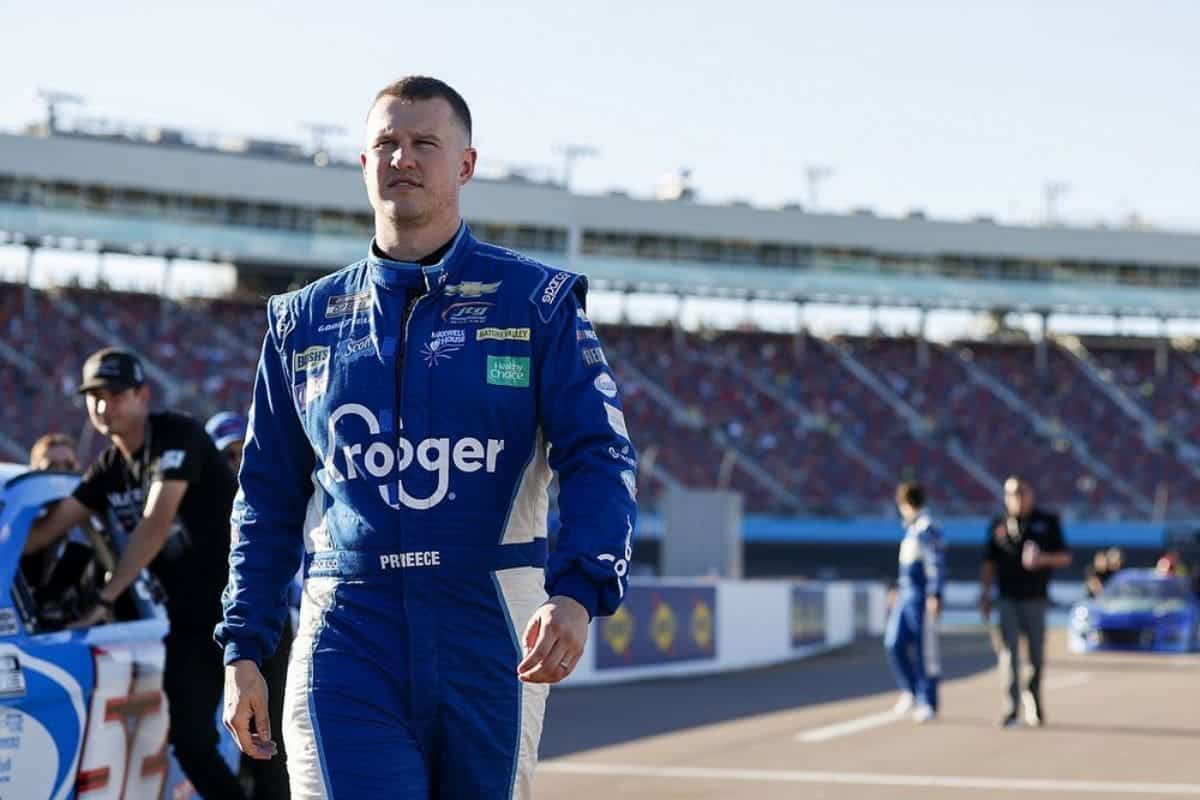Ryan Preece Refuses to Blame Weather: Ryan Preece‘s method in handling his performance at Pocono Raceway shows a degree of maturity not often seen in sports settings. Despite the challenging weather conditions, Preece abstained from blaming his race difficulties on external factors, choosing to concentrate on the inherent challenges presented by the track. This decision emphasizes his responsibility shows his commitment to honing his skills and tactics. As we explore the intricacies of Preece’s race, including the dynamics within Stewart-Haas Racing and his exchanges with fellow drivers, the intricacy of his experience in NASCAR becomes more evident.
Key Highlights
- Preece attributed his performance to track-specific challenges rather than weather conditions.
- Preece’s starting position at 36th significantly disadvantaged his race outcome.
- An incident involving Corey LaJoie and Kyle Busch disrupted Preece’s race flow.
- Preece emphasized the need for internal team improvements.
- Preece remains focused on his ambitions despite setbacks and external challenges.
Ryan Preece’s Uncertain Future at Stewart-Haas Racing
Ryan Preece’s tenure at Stewart-Haas Racing is in uncertainty as the team faces considerable restructuring, with three of his teammates already securing new contracts for the 2025 season. This development places Preece in an increasingly difficult position within the team dynamics, raising questions about his role and future with SHR. The organization’s calculated decisions indicate a shift in their long-term vision, potentially signifying a preference for a fresh lineup or a different skill set that Preece may not currently fulfill.
Preece’s journey with SHR has been punctuated by moments of promise, such as his initial top-five finish at Nashville, contrasted with a string of lackluster performances that saw him finishing outside the top-15. This inconsistency in results has likely contributed to the ambiguity surrounding his contract renewal. As SHR continues to finalize its roster, Preece’s performance metrics and strategic alignment with the team’s goals will be under intense scrutiny.
Moreover, the internal dynamics at SHR are evolving rapidly. The commitment to secure his teammates’ futures indicates a direction that may not align with Preece’s current path. SHR’s management appears to be prioritizing stability and proven performance, which might not bode well for Preece without a noteworthy turnaround in his results.
Preece’s Performance Verdict and Pocono Run
In his recent analysis of the Pocono race, Preece decisively attributed his performance struggles to the challenging dynamics of the track and the aggressive nature of his competitors, rather than to any adverse weather conditions. The veteran driver emphasized that the notorious Tricky Triangle lived up to its name, presenting a set of demanding corners and variable banking that tested the mettle of every driver on the track. Preece acknowledged that while an isolated storm cell did threaten to disrupt proceedings, the race itself transpired under dry conditions, eliminating weather as a detrimental factor.
Preece’s evaluation of his Pocono run was grounded in the reality of facing a fiercely competitive field. He hinted at the aggressive driving styles that characterized much of the race, which he found to be a meaningful challenge. The race saw multiple instances of hard racing, with drivers jostling for position, often pushing the limits of their vehicles and their own capabilities. Preece noted that these aggressive actions contributed to an intensely competitive environment, where maintaining position required not only skill but also strategic expertise.
“No, no, I didn’t. No, I don’t think the wind speed slowed us up at all.” – Preece
Adding to the complexity, Preece pointed out that the unique layout of Pocono necessitates a distinct approach compared to other tracks, emphasizing the importance of precise corner entry and exit. The variations in the track’s turns demand a high level of adaptability, and any miscalculation can result in a substantial loss of time or position.
Factors Affecting Preece’s Race Performance
Several vital factors influenced Preece’s race performance at Pocono, ranging from his challenging starting position to the chaotic incidents during the final stage. Starting 36th on the lineup grid, Preece was already at a notable disadvantage. Such a rearward position in a competitive field like NASCAR often requires not only exceptional driving but also a tactical approach to navigate through the pack. This foundational setback meant that Preece was battling uphill from the very beginning.
Moreover, the tumultuous final stage had a considerable impact on Preece’s race outcome. The incident involving Corey LaJoie and Kyle Busch on lap 121 played a crucial role. When LaJoie clipped Busch’s rear, it set off a chain reaction that saw Busch’s No. 8 car spinning and collecting several other cars in the process. The involved multiple drivers, including Preece, Harrison Burton, Carson Hocevar, and Ricky Stenhouse Jr. The collision disrupted the race flow and dashed any hopes Preece had of climbing up the ranks, relegating him to a 30th place finish.
It’s worth noting that while some drivers felt the varying wind speeds impacted their cars, Preece explicitly denied any such effect on his performance. His focus remained on the tangible, track-specific challenges he faced. By not attributing his letdown to external factors like weather, Preece displayed a grounded perspective, potentially signaling areas for internal team improvements rather than seeking external excuses.
Corey LaJoie’s Apology
Acknowledging the incident’s broader implications, Corey LaJoie issued a public apology, expressing regret for the unintended consequences of his actions on Ryan Preece and other drivers involved. LaJoie’s apology came in the wake of a heated race at Pocono, where a series of moves led to a multi-car incident. LaJoie admitted to the press that while he did not intend to wreck anyone, the sequence of events—specifically another block by Kyle Busch—escalated the situation beyond his control, resulting in noteworthy ramifications for multiple drivers, including Preece.
“You know, I don’t want to … I’m not the guy that wants to wreck anybody, but I think if Kyle blocks only once, then we both go around the corner and live to fight another day. But that second block that he thought he had it covered and he didn’t was what did him in and did a couple of other guys in.” – LaJoie
LaJoie’s statement was a significant departure from his earlier stance towards Richard Childress’ rebuke concerning his actions against Busch. In this instance, LaJoie maintained that Busch’s additional block was the decisive moment that precipitated the crash. He suggested that if Busch had only blocked once, both drivers would have navigated the corner without incident, allowing them to continue the race unharmed.
The apology highlights LaJoie’s awareness of the complex dynamics on the racetrack and the fine line between aggressive racing and reckless driving. His acknowledgment of the broader impact on drivers like Preece emphasizes the interconnected nature of competitive racing, where one driver’s decisions can inadvertently affect many.
Past Conflict Between Preece and LaJoie
Historically, tensions have frequently flared between Ryan Preece and Corey LaJoie, particularly highlighted by last year’s dramatic confrontation at Pocono Raceway. The confrontation occurred towards the race’s end when LaJoie made contact with Preece’s No. 41 car, spinning him out of contention as the race ended under caution. This incident, paired with Preece’s already challenging career—having only 13 top-ten finishes in 170 starts—added fuel to the fire, leading to a heated post-race altercation.
Corey LaJoie recounted the intensity of the moment, describing how he narrowly avoided physical confrontation with Preece. According to LaJoie, he saw the aggression in Preece’s demeanor as he exited his car and approached. Sensing the imminent clash, LaJoie closed his visor and braced for impact. The ensuing scuffle was evocative of the Boyer-Newman clash at Charlotte, with Preece reaching into LaJoie’s car and delivering a few helmet slaps before being restrained by LaJoie’s crew chief, Ryan Sparks.
“I see the aggression in which he gets out of his car and I’m like, ‘Oh He is not he is not wanting to talk.’ He is running at me. So as I saw him come, my visor was open. So I shut it to make sure he didn’t captain and say no poke me in the eyes… And then he reached in the car.”
“Kind of like Boyer Newman at Charlotte a couple of years ago. And I grabbed his left hand that he put in there I kind of pinned it up against the steering wheel. And he slapped around the helmet a couple of times and then my fearless leader Ryan Sparks came and wrapped him up Bowman gray style.” – LaJoie
- High Stakes and High Emotions: With every race being a potential game-changer, the pressure on drivers can lead to explosive reactions.
- Intense Rivalries: Incidents like these demonstrate how rivalries can escalate quickly, affecting both drivers’ performance and mental state.
- Crew Dynamics: The role of the crew in diffusing or exacerbating conflicts is vital, as seen with Ryan Sparks’ involvement.
News in Brief: Ryan Preece Refuses to Blame Weather
Ryan Preece’s approach to the Pocono Raceway race demonstrates a commendable level of professionalism and accountability. By refusing to attribute his performance to adverse weather conditions and instead focusing on track-specific challenges, Preece highlights a commitment to improvement and resilience.
This attitude, coupled with a willingness to address conflict and setbacks directly, positions Preece as a dedicated competitor in NASCAR, intent on overcoming obstacles and advancing his career despite uncertainties and challenges.
Also Read: Ryan Preece’s Cup Series Fall Due to Tony Stewart’s Surprising Blow



